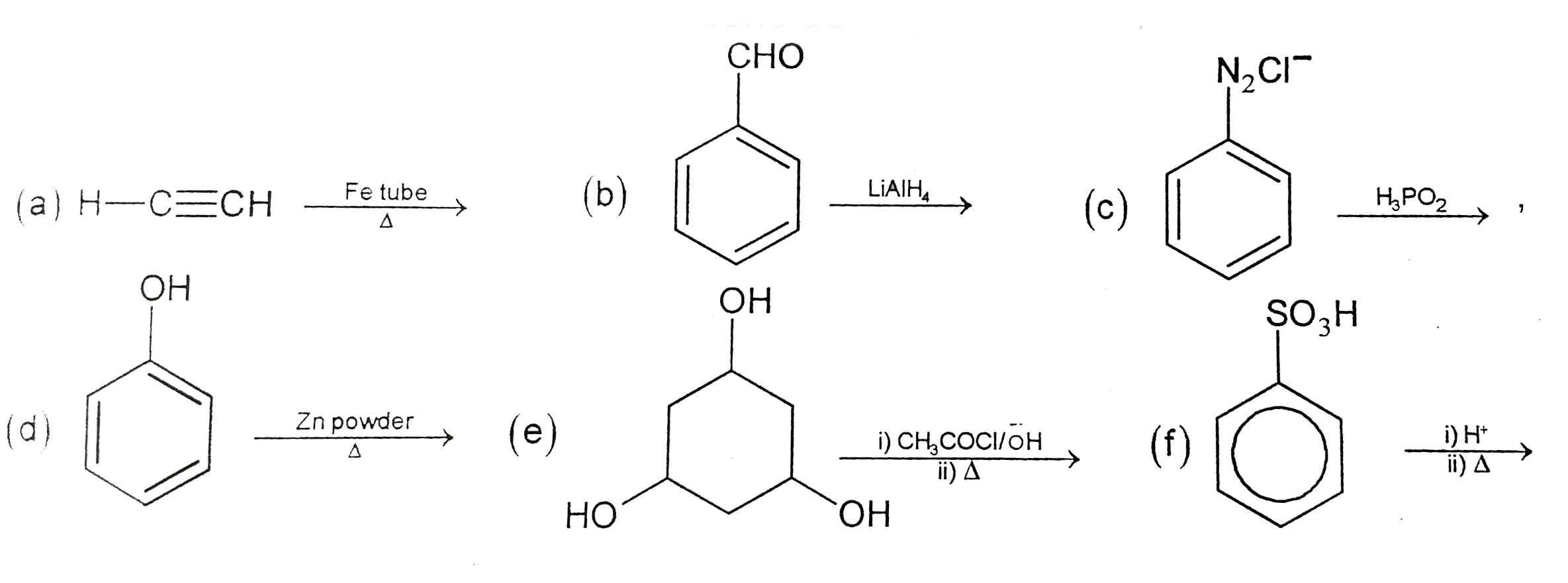2-Chloro-2-methylpropane on reaction with aqueous KOH gives X as the major product. X is
but-2-ene
2-methylbut-1-ene
2-methylprop-1-ene
2-methylbutan-2-ol
The correct Answer is:C
To solve the question regarding the reaction of 2-chloro-2-methylpropane with aqueous KOH, we will follow these steps:
Step 1: Identify the structure of 2-chloro-2-methylpropane
2-chloro-2-methylpropane is a tertiary haloalkane. Its structure can be represented as follows:
CH3|CH3−C−Cl|CH3
Step 2: Understand the reaction conditions
When 2-chloro-2-methylpropane reacts with aqueous KOH, it undergoes an elimination reaction. Given that it is a tertiary halide, the reaction will favor an E2 elimination mechanism.
Step 3: Identify the elimination mechanism
In the E2 mechanism, a base (in this case, KOH) abstracts a beta-hydrogen while the leaving group (Cl) departs simultaneously. The beta-hydrogens are those attached to the carbon atoms adjacent to the carbon bearing the chlorine atom.
Step 4: Determine the beta-hydrogens
In the structure of 2-chloro-2-methylpropane, there are three beta-hydrogens available for elimination:
- The beta carbons are the ones adjacent to the carbon with the chlorine atom.
Step 5: Perform the elimination
When a beta-hydrogen is removed, the electrons from the C-H bond will form a double bond between the alpha carbon (the one with the chlorine) and the beta carbon from which the hydrogen was removed. The chlorine will leave as Cl⁻.
Step 6: Write the product
The major product formed from this elimination will be 2-methylpropene (or 2-methylprop-1-ene), which can be represented as:
CH3∣CH3−C=CH2
Step 7: Name the product
The product is named 2-methylprop-1-ene.
Conclusion
Thus, the major product X formed from the reaction of 2-chloro-2-methylpropane with aqueous KOH is 2-methylprop-1-ene.
---
2-chloro-2-methylpropane is a tertiary haloalkane. Its structure can be represented as follows:
When 2-chloro-2-methylpropane reacts with aqueous KOH, it undergoes an elimination reaction. Given that it is a tertiary halide, the reaction will favor an E2 elimination mechanism.
In the E2 mechanism, a base (in this case, KOH) abstracts a beta-hydrogen while the leaving group (Cl) departs simultaneously. The beta-hydrogens are those attached to the carbon atoms adjacent to the carbon bearing the chlorine atom.
In the structure of 2-chloro-2-methylpropane, there are three beta-hydrogens available for elimination:
When a beta-hydrogen is removed, the electrons from the C-H bond will form a double bond between the alpha carbon (the one with the chlorine) and the beta carbon from which the hydrogen was removed. The chlorine will leave as Cl⁻.
The major product formed from this elimination will be 2-methylpropene (or 2-methylprop-1-ene), which can be represented as:
The product is named 2-methylprop-1-ene.
Thus, the major product X formed from the reaction of 2-chloro-2-methylpropane with aqueous KOH is 2-methylprop-1-ene.
Topper's Solved these Questions
- HALOALKANES AND HALOARENESBOOK - NCERT FINGERTPS ENGLISHCHAPTER - HALOALKANES AND HALOARENESEXERCISE - Higher order thinking skills
8 Videos
- HALOALKANES AND HALOARENESBOOK - NCERT FINGERTPS ENGLISHCHAPTER - HALOALKANES AND HALOARENESEXERCISE - Exemplar problems
24 Videos
- HALOALKANES AND HALOARENESBOOK - NCERT FINGERTPS ENGLISHCHAPTER - HALOALKANES AND HALOARENESEXERCISE - Physical properties
7 Videos
- GENERAL PRINCIPLES AND PROCESSES OF ISOLATION OF ELEMENTSBOOK - NCERT FINGERTPS ENGLISHCHAPTER - GENERAL PRINCIPLES AND PROCESSES OF ISOLATION OF ELEMENTSEXERCISE - Assertion And Reason
15 Videos
- POLYMERS BOOK - NCERT FINGERTPS ENGLISHCHAPTER - POLYMERS EXERCISE - NCERT Exemplar
9 Videos
Similar Questions
Knowledge Check
2-Bromo-3,3- dimethylbutane on reaction with aqueous KOH yields X as the major product. X is
A2,3,-trimethylpropan-1-olB2,2-dimethlbutan-3-olC2,3- dimethylbutan-2-olD2,2-dimethylpropan-2-ol Find major product (X):A
Find major product (X):A B
B C
C D
D
In the following reaction,

the structure of the major product 'X' is :
View SolutionNumber of reaction which gives Benzene as major products?

View Solution X (major product ) X will be -
X (major product ) X will be -
View SolutionHeating of 2-chloro-1-phenylbutane with EtOK/EtOH gives X as the major product. Reaction of X with Hg(PAc)2/H2O followed by gives Y as the major product. Y is :
View Solution
Give the major and minor products.
View SolutionReaction of alkyl halides with alcoholic KOH gives alcohols as the major product.
View Solution
